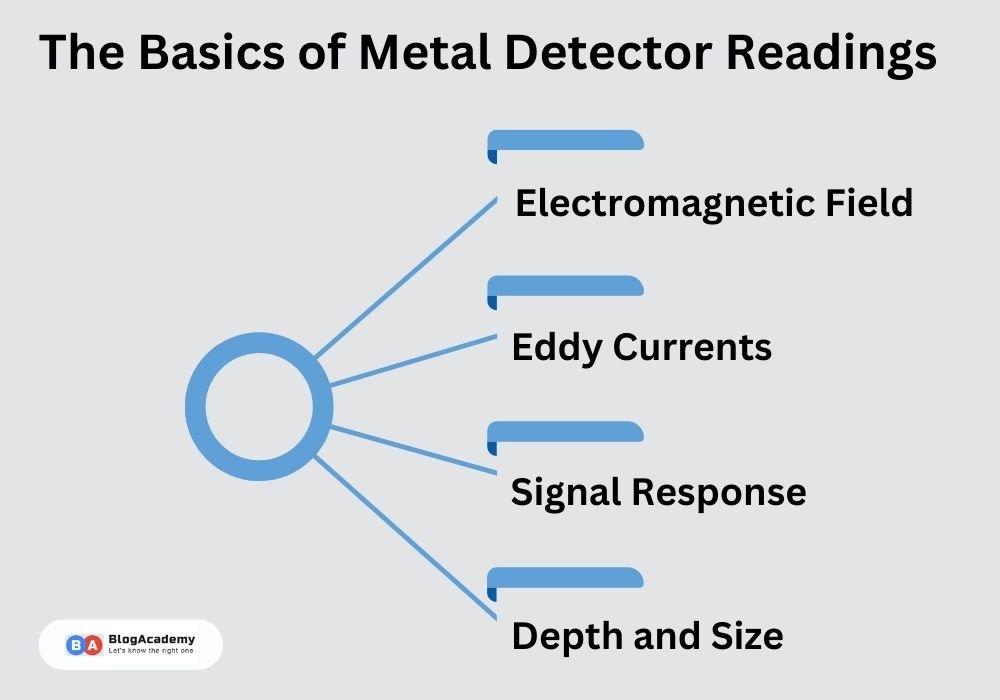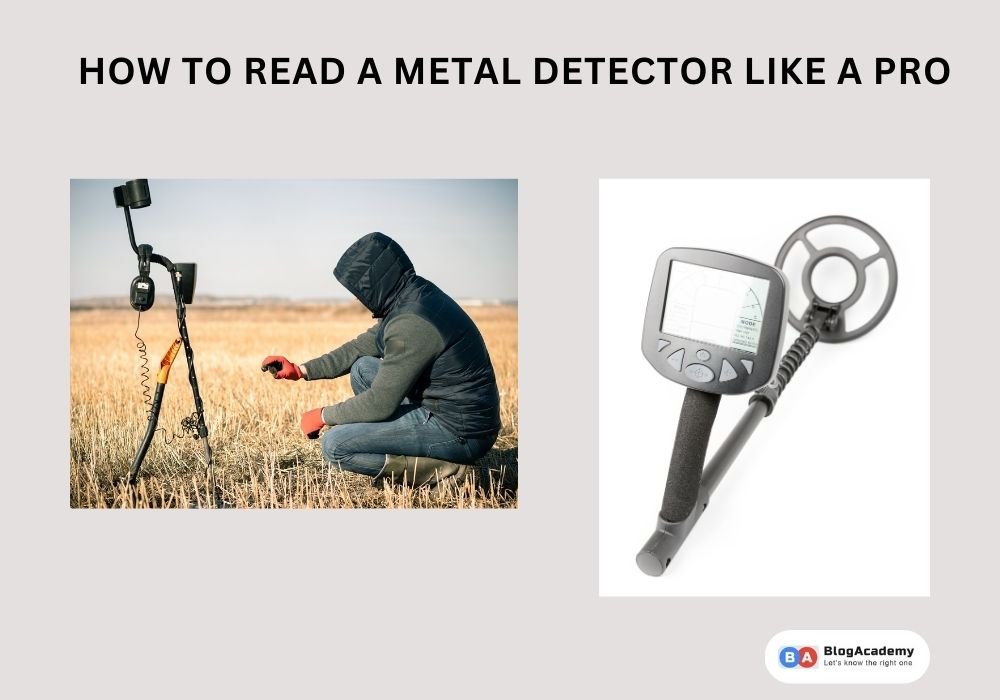Are you ready to embark on a treasure-hunting adventure and unearth hidden gems from the depths of the Earth? If so, you’re in the right place! Welcome to our guide on “How to Read a Metal Detector Like a Pro.”
Ever used a metal detector and felt puzzled by all the strange sounds it makes? It’s frustrating, right? You’re not alone—lots of beginners struggle with this.
Metal detecting is super cool. It’s like a treasure hunt, but when you can’t understand your metal detector, the fun fades fast. You might miss out on valuable stuff and get annoyed.
In this guide, we’ll show you how to understand your metal detector like a pro. No more confusing beeps and blips! You’ll confidently know what’s buried below, whether you’re new to this hobby or want to get even better. Get ready for some treasure-hunting excitement!
How do you read a metal detector?
Reading a metal detector is a straightforward process. Start by turning it on and allowing it to calibrate, usually by waving it in the air away from any metal objects. Adjust the sensitivity and discrimination settings based on your preferences and the type of objects you’re searching for.
Hold the metal detector’s search coil close to the ground, parallel to the surface, and move it slowly and steadily in a sweeping motion. Keep the coil as close to the ground as possible without touching it. When the detector locates metal, it will emit a signal, often in the form of a sound or visual indicator. Pay attention to the signal’s strength and consistency.
To pinpoint the exact location of the metal target, move the coil in smaller, precise sweeps and note where the signal is strongest. Finally, dig carefully to uncover the buried item, ensuring you respect any local regulations and obtain the necessary permissions if required.
The Basics of Metal Detector Readings

Metal detectors are devices that use electromagnetic fields to locate metal objects buried or hidden underground. Here are the basics of how metal detector readings work:
- Electromagnetic Field: Metal detectors emit a low-level electromagnetic field from a coil or antenna. When this field encounters metal, it induces an electric current in the metal object.
- Eddy Currents: The metal object, when exposed to the electromagnetic field, generates small electric currents called eddy currents. These currents create their own magnetic fields, which oppose the original field emitted by the detector.
- Signal Response: The metal detector’s coil or antenna detects the changes in the magnetic field caused by the eddy currents. This disruption triggers an audible or visual signal to alert the operator.
- Discrimination: Modern metal detectors often have discrimination settings to filter out unwanted items like nails or bottle caps. Users can adjust these settings to focus on specific types of metals.
- Depth and Size: The strength of the signal and the depth at which it occurs can provide information about the size and type of metal object.
By analyzing these readings, metal detector users can determine the presence, location, and composition of buried or hidden metal objects.
Understanding the Components
Before diving into reading a metal detector, let’s familiarize ourselves with its essential components:
- Control Panel: The control panel houses the settings and features of the metal detector, including sensitivity, discrimination, and mode selection.
- Search Coil: The search coil, also known as the search head, is the part of the detector that emits and receives electromagnetic signals to detect metal objects.
- Shaft and Handle: These components allow you to hold and maneuver the metal detector comfortably.
- Display Screen: Many modern metal detectors come with an LCD screen that displays important information such as target depth, type, and battery status.
- Audio Output: The metal detector emits audio signals (usually beeps or tones) to alert you to the presence of metal objects.
Interpreting Audio Signals
One of the most critical aspects of reading a metal detector is understanding the audio signals it produces. Different tones or beeps indicate various characteristics of a detected object:
- Tone Pitch: Higher-pitched tones typically indicate smaller or shallower objects, while lower-pitched tones suggest larger or deeper targets.
- Signal Strength: The strength or volume of the audio signal can provide insights into the size and depth of the target. Stronger signals often indicate closer or larger objects.
- Target Identification: Some detectors offer target identification features that assign unique audio tones to specific types of metals, such as gold, iron, or coins. Familiarize yourself with these tones to make accurate identifications.
Example: Let’s say you’re metal detecting in a park, and your detector emits a high-pitched, strong signal. This suggests a shallow, potentially small target. As you dig, you uncover a coin just a few inches below the surface.
Understanding Visual Indicators
Many modern metal detectors are equipped with LCD screens that provide visual information about detected targets. Understanding these indicators can enhance your metal-detecting experience:
- Target Depth: The display often shows the approximate depth of the detected object in inches or centimeters. This helps you determine how deep you need to dig.
- Target ID: Some detectors display a numerical value or icon representing the type of metal detected, such as iron, copper, or silver.
- Battery Status: Keep an eye on the battery indicator to ensure your detector remains operational during your search.
Example: Your metal detector’s display shows a depth reading of 6 inches and a target ID of “83,” indicating a potentially valuable metal object buried about 6 inches below the surface. This information guides your digging efforts.
Mastering Detector Modes
Metal detectors offer various operating modes tailored to different hunting scenarios. Understanding these modes and when to use them is crucial:
- All Metal Mode: This mode detects all types of metals without discrimination. It’s ideal for finding a wide range of objects but may produce more false signals.
- Discrimination Mode: In this mode, the detector can be set to ignore specific types of metals, reducing false signals. It’s useful when searching for specific items.
- Pinpoint Mode: Pinpoint mode helps you precisely locate the target’s position in the ground, making digging more accurate and efficient.
Example: Suppose you’re searching for valuable relics in a field known for containing both valuable and junk metal. Using Discrimination Mode, you can eliminate signals from common junk metals like nails and focus on the signals from valuable relics.
Adjusting Sensitivity and Ground Balance
Metal detectors allow you to adjust sensitivity and ground balance settings:
- Sensitivity: Increasing sensitivity makes the detector more responsive to small or deep targets but may also increase false signals, especially in areas with high mineralization.
- Ground Balance: Adjusting ground balance compensates for mineralized soil conditions, ensuring accurate target detection. Proper ground balance reduces interference and enhances performance.
Example: You’re exploring a beach with high mineralization due to saltwater and black sand. To maintain stable operation, you lower the sensitivity and adjust the ground balance accordingly.
Techniques for Effective Sweeping
Reading a metal detector effectively also involves using proper sweeping techniques:
- Overlapping Swings: To ensure you don’t miss any targets, overlap your swings slightly. This ensures complete coverage of the search area.
- Keep a Consistent Height: Maintain a consistent height above the ground while sweeping to maintain a uniform detection depth.
- Slow and Steady: Move the detector slowly and steadily to give it ample time to detect and process signals accurately.
Example: Imagine you’re searching a sandy beach for lost jewelry. You employ a slow and steady sweeping motion, overlapping your swings slightly. This thorough approach increases your chances of finding buried treasures.
How can I be successful at metal detecting?

To excel in metal detecting, start with good gear and scout your locations. Understand your detector’s settings and practice in your backyard. Move slowly and keep it close to the ground. Pay attention to clear signals and use a pinpointer for precision. Dig carefully to avoid damaging potential finds.
Adhere to local laws and obtain necessary permissions. Join a metal-detecting group for guidance and camaraderie. Be patient; success may take time. Keep records of your discoveries and their historical context, enhancing your enjoyment. With practice, patience, and respect for the rules and the environment, you’ll boost your chances of finding valuable treasures.
How deep do metal detectors read?
The depth at which metal detectors can detect objects depends on several factors, including the type of metal, the detector’s technology, and the size of the object.
In general, entry-level detectors can typically detect coins and small objects at depths of up to 6-8 inches (15-20 centimeters), while more advanced detectors may reach depths of 2-3 feet (60-90 centimeters) for larger targets.
Specialized detectors designed for deep treasure hunting can potentially reach depths of several feet or more. However, the accuracy of detection tends to decrease with greater depth, making it a trade-off between depth and precision.
Conclusions
Reading a metal detector is a valuable skill that can lead to exciting discoveries and successful treasure hunting. By understanding the audio signals, visual indicators, and various operating modes, along with mastering sensitivity and ground balance adjustments, you’ll be well-equipped to make the most of your metal-detecting adventures. Remember that practice makes perfect, so get out there and start honing your skills as a proficient metal detectorist. Happy hunting!



